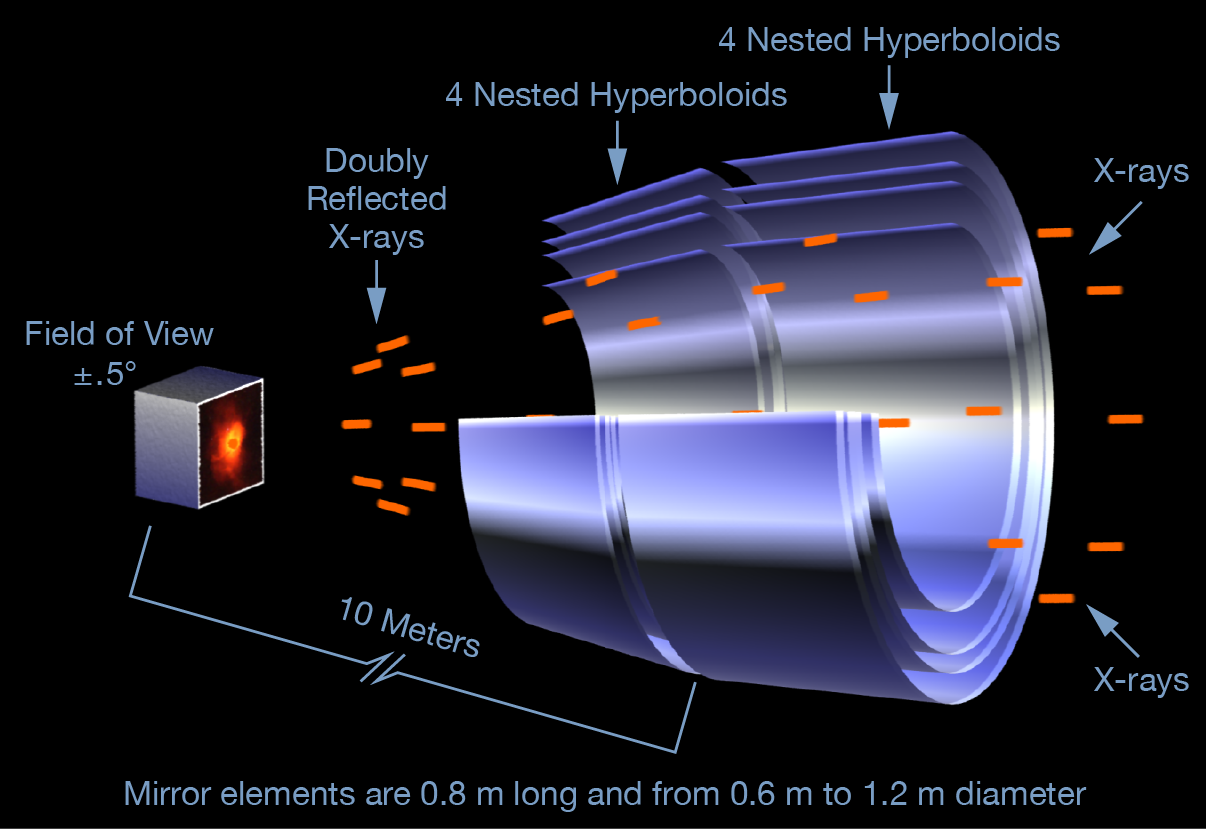Chapter 6: Electromagnetics
Electromagnetic radiation travels through empty space in a straight line except when it is bent slightly by the gravitational field of a large mass in accordance with general relativity.
Radio Frequency (RF) waves can be reflected by certain substances, in much the same way that light is reflected by a mirror. As with light on a mirror, the angle at which RF is reflected from a smooth metal surface, for example, will equal the angle at which it approached the surface. In other words . . .
The principle of RF reflection is used in designing antennas to focus incoming microwave radio energy from a large area down into a narrow beam, collecting and concentrating it into a receiver. If a reflector is shaped like a paraboloid, RF electromagnetic waves approaching on-axis (and only those) will reflect and focus at the feed horn.
This arrangement, called prime focus, makes use of a large reflector to receive very weak RF signals. It is also used in optical telescopes. But prime focus arrangements for large radio antennas place heavy prime-focus equipment far from the main reflector, so the supporting structure tends to sag under its own weight, affecting the system's ability to focus. It also exposes large structures to the wind.
A solution is the Cassegrain focus arrangement. Cassegrain antennas add a secondary reflecting surface, called a subreflector, to "fold" the RF back to a focus near the primary reflector. All the DSN's antennas are of this design because it accommodates large apertures and is structurally strong, allowing heavy equipment to be located nearer the structure's center of gravity. More information on the design of DSN stations appears in Chapter 18. Many optical telescopes both large and small also use Cassegrain or similar systems.
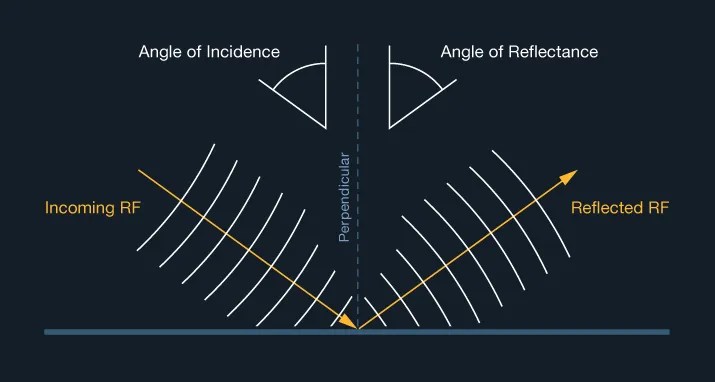
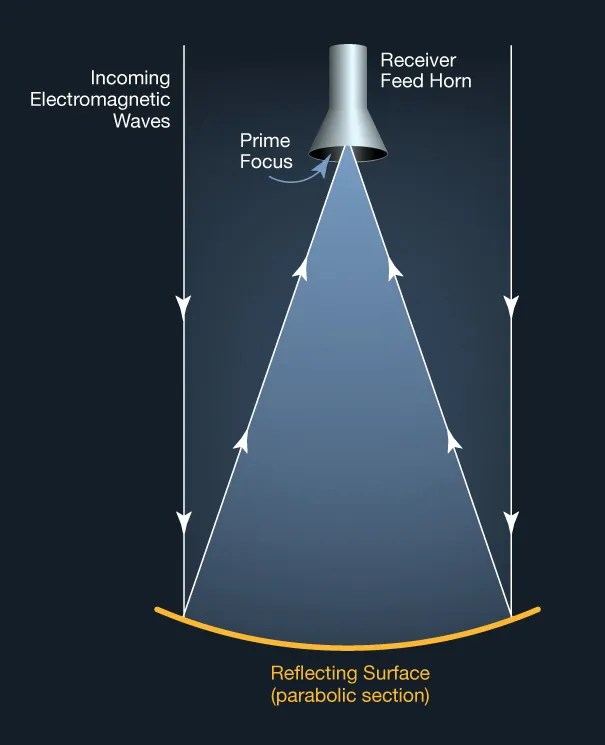
The reflective properties of RF electromagnetic waves have also been used to investigate the planets and their satellites using a technique called planetary radar astronomy. With this technique, electromagnetic waves are radiated from high-power transmitters in the DSN antennas and they reflect off the surface of the planet or satellite, to be received at one or more Earth stations. Using very sophisticated signal processing techniques, the receiving stations dissect and analyze the signal in terms of time, amplitude, phase, and frequency.
JPL's application of this radar technique, called Goldstone Solar System Radar (GSSR), has been used to develop images of the surface features of Venus, which is eternally covered with clouds, of Mercury, difficult to see visually in the glare of the Sun, and of satellites of the Jovian planets, including Saturn's large moon Titan, whose surface is obscured from view by a thick hazy atmosphere.
The Arecebo Radio Telescope offers good examples of RF reflecting schemes. This 305-meter aperture facility serves for both radio astronomy and radar astronomy investigations.
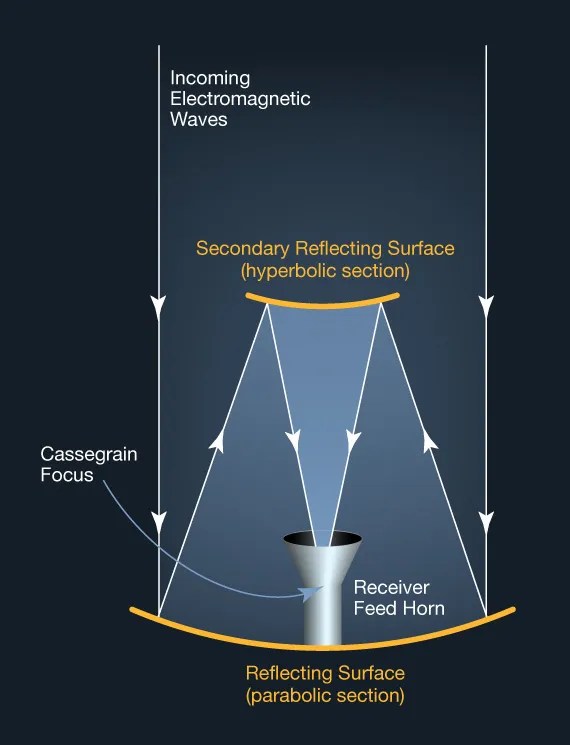
At much shorter wavelength and higher energy than RF and light, X-rays do not reflect in the same manner at the large incidence angles employed in optical and radio telescopes. Instead, they are mostly absorbed. To bring X-rays to a focus, one has to use a different approach from Cassegrain or other typical reflecting systems.
Much like skipping a stone on the water by throwing it at a low angle to the surface (experiments reveal that 20° is best), X-rays may be deflected by mirrors arranged at low incidence angles to the incoming energy. Mirrors in X-ray telescopes are arrangements of flat surfaces or concentric tubes arranged so that the incoming X-rays strike at glancing (grazing) incidence and deflect toward a focal point in one or more stages.
View this animation that illustrates the concept.
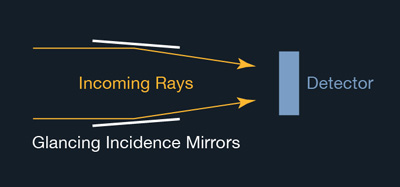
The Chandra X-ray Observatory, one of NASA's four "Great Observatories," has been operating in Earth orbit since August 1999. Chandra uses two sets of 4 nested grazing-incidence mirrors to bring X-ray photons to focus onto two detector instruments as illustrated below.
Another X-ray telescope, the Nuclear Spectroscopic Telescope Array (NuSTAR), was launched in June of 2012. Its primary goal is threefold: conduct a survey of supermassive black holes; study and map the radioactive material contained within supernova remnants; and observe the relativistic jets of matter emitted by active galactic nuclei.
